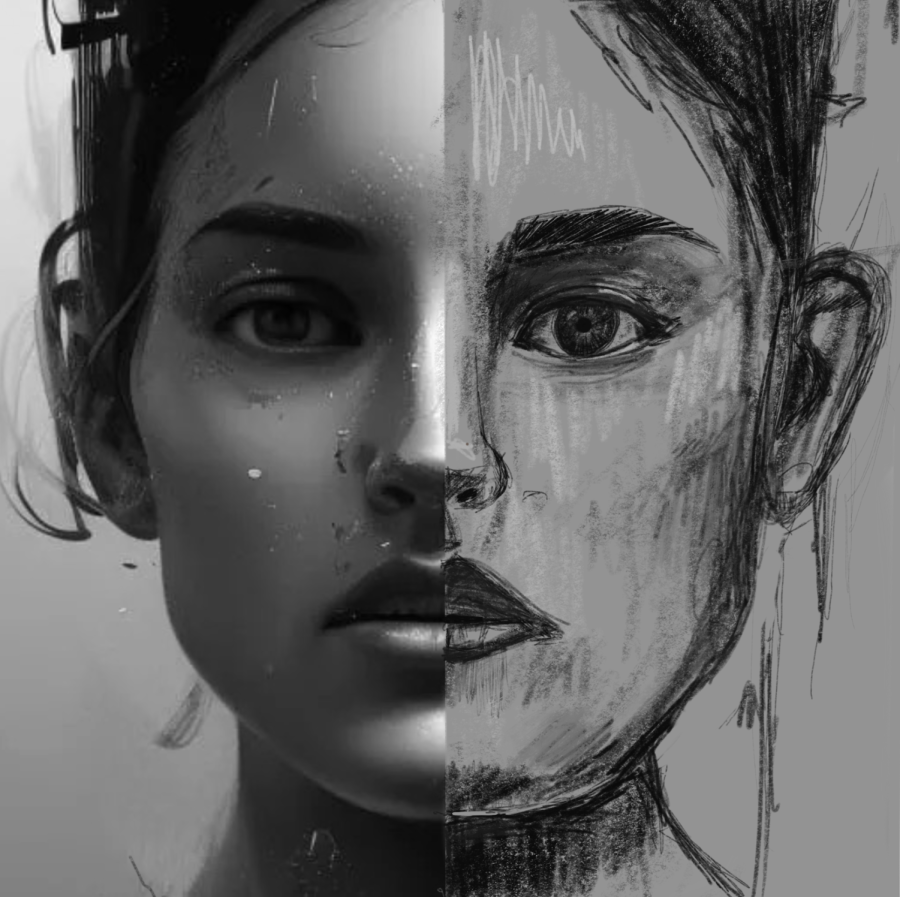A&E: Students and teachers discuss the ethics behind AI-generated artwork
Artificial Intelligence, or AI, has swept the world with its new technology and many features. From creating avatars, editing photos and creating an art piece with a click of a button, the possibilities for AI are constantly growing. While AI generated art may seem harmless, it can negatively affect artists. Students and staff at SCHS each give their own perspectives and opinions on AI-generated art and how it can impact the art community.
Many people believe that AI has the potential to be life changing, some wonder whether this change will be for the better or worse. Art teacher Neil Woodman believes that people are not educated enough to know the influence AI has.
“Nobody can imagine all of the different ways that our lives are going to change with AI,” Woodman said. “It’s going to be civilization-changing is how I would probably put it.”
AI art has been criticized for its convenience, and some worry that its rise in popularity will lessen the importance of art created by human artists. Junior Alyssa McCuin thinks that as the use of AI rises, human-made art may become less treasured.
“If AI art becomes too popular and companies profit a lot off of it, I feel like human made art could become overlooked and won’t have as much value,” McCuin said.
Having artists’ work disregarded can offend artists and make them think less of their work. Art and digital media teacher Ara Tanajian considers AI art to be not as creative as human-made art.
“Nothing original has been in AI art. It’s always kind of rehashing stuff that’s been done by people already,” Tanajian said.
Like Tanajian, McCuin believes human-made art has more passion behind it than AI art. He believes that artists work harder for their products and that no machine could compare to human creativity.
“Human-made art has hours of planning, work, emotion and effort put into it. That’s what makes it so unique and unable to be recreated by any AI, no matter how advanced the technology seems,” McCuin said. “Human-made art is far more creative and personal compared to AI art.”
Senior Bryan Hernandez also believes AI-generated art lacks a sense of passion and purpose. He believes that the way we create art is through stories and personal experiences.
“We do art based on how we feel, or how we see things, our perspectives on things,” Hernandez said. “That’s how we create art in this world.”
There are many reasons why people make art, such as a hobby or professionally. For Hernandez, art is a way of winding down and practicing creativity.
“It gets me thinking outside of the box, creativity wise,” Hernandez said. “It’s time to relieve stress, relax and take care of myself.”
Another reason people make art is for enjoyment and the way it makes them feel. Relating to Hernandez, Tanajian enjoys making art because it makes him happy.
“‘Happiness is an activity of the soul in accordance with virtue,’ which simply means that for me to do something that I’m good at, that is what I’m meant to do. It’s going to make me happy,” Tanajian said.
Even with the negative factors of AI, Woodman trusts that the AI system will improve and become a big part of our lives. He suggests giving AI a chance while it continues its manufacturing.
“They’re developing how to think about how to make AI be a thoughtful machine, a thoughtful program, and it’s gonna get better,” Woodman said. “It’s still in its youngest years, so I wouldn’t expect anything to be exactly the way you want to.”
With new AI technology taking over the world by storm, many still think it cannot compare to the creativity present in human-made art. Many see art as a way of expressing one’s true self, and perception of the world, which is what makes human made-art special.
“Imagery, creativity and then just expressing emotions and all of those things are what really makes a human art unique,” Hernandez said.


